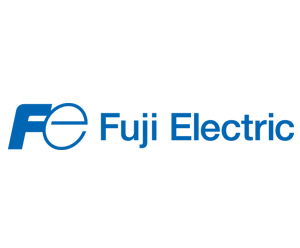The country of Japan is known as the “land of the rising sun” or the “sun’s origin” as people on the mainland of Asia looked toward the sunrise and knew Japan was located where the sun first appeared. Today, the name is still an appropriate description of the country and its people where beautiful cherry…
Let’s face it – if you have ever worked around electricity you’ve probably got a few “shocking” stories to share resulting from an electrical mistake – at least that’s the case for our very own Product Managers and Product Engineers at AutomationDirect.com. Luckily, these electrical installation blunders didn’t result in any serious injury! We know making…
Our Group Motor Protection White Paper explains how the usual way of preventing a small motor from drawing too much current is to install overcurrent protection in the form of a circuit breaker or some other kind of limiter. But installations that employ more than one motor might not want to use this approach. What’s Inside? By using…
+Tech TopicsAutomation NotebookCircuit ProtectionIssue 19 – 2011Learning ResourcesNotebook IssueProductTechnology Brief
Electrical Arcs (Part 2 of a 2 Part Series)
In Part One of this article we discussed the equipment and procedures used to manage the damaging effects of arcs in electrical equipment. In Part Two, we will discuss some of the basic methods, tools, components and circuits that should be used to operate safely around circuits with high arc potential. Part One can be…
Automation NotebookCircuit ProtectionIssue 21 – 2011Learning ResourcesMotorsNotebook IssueProductVariable Speed Drives
Motors and Drives
Premium Efficiency Motors The IronHorse™ general purpose AC motor line now includes cast iron three-phase premium efficiency motors available in horsepower ranges from 1 to 200 hp. Motors are available in speeds of 1200, 1800, and 3600 RPM and are electrically reversible. The three-phase industrial duty T-frame and TC-frame TEFC motors feature ribbed cast iron…
+Tech TopicsAutomation NotebookCircuit ProtectionIssue 18 – 2010Learning ResourcesNotebook IssueProductTechnology Brief
Electrical Arcs (Part 1 of a 2 Part Series)
Those of us who have worked with, or around, electrical equipment have witnessed electrical arcs. At the very least, we’ve seen the sparks produced when a relay or contactor switches off. Similarly, most of us also know that repetitive arcing can be very damaging to contacts over the long term, requiring periodic replacement of relays…
+Tech TopicsAutomation NotebookCircuit ProtectionIssue 14 – 2009Learning ResourcesNotebook IssueProductTechnology Brief
Fuses or Circuit Breakers: Which should you use?
Circuit Protection For most of us who work in the electrical design field, the question of circuit protection is omnipresent in our day-to-day efforts. There are a myriad of circuit protection technologies available that address phenomenon such as high voltage transients, inductive kick-back, capacitive coupling, high inrush currents and ground faults, just to name a…
+Tech TopicsAutomation NotebookCircuit ProtectionIssue 10 – 2008Learning ResourcesNotebook IssueProductTechnology Brief
Arc Flash: What’s the big deal?
What is an Arc Flash? The subject of arc flash has become a major concern in electrical safety. What exactly is arc flash and how can it be prevented? Arc flash is high temperature conductive plasma formed when a short circuit fault occurs between at least two energized conductors. It occurs when a phase-to-phase fault…
AutomationDirect now carries a line of Molded Case Circuit Breakers (MCCBs) that offers UL489 listed performance for branch circuit overcurrent protection and disconnecting means. The circuit breakers’ small size saves panel space, compared to standard breakers or comparable fusible devices. The breakers are manufactured under license from Eaton Electrical, Inc., the manufacturer of Cutler-Hammer products….









